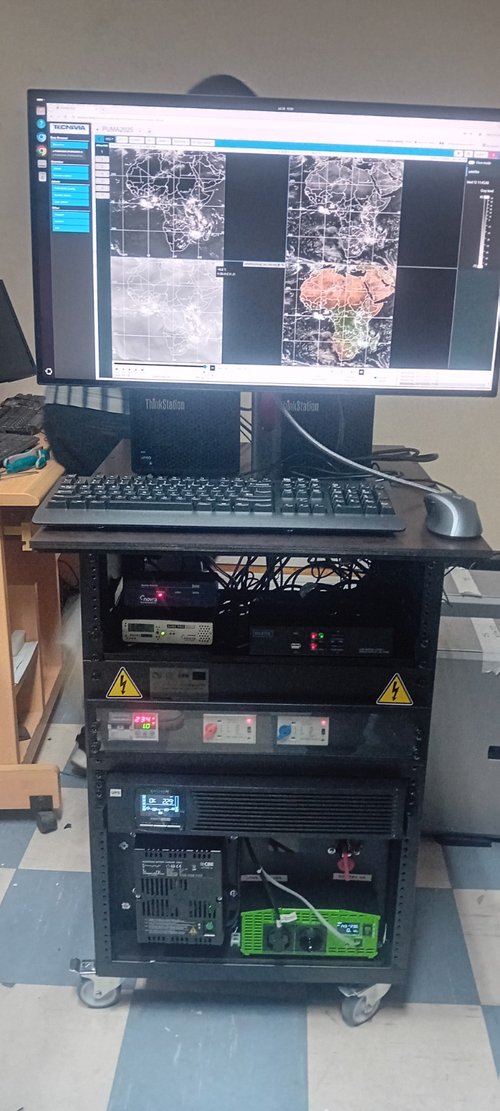DCCMS Enhances Weather Monitoring Capabilities with ClimSA Satellite System Upgrade
By Alick Chibanthowa
The Department of Climate Change and Meteorological Services (DCCMS) has successfully completed the installation of a state of the art satellite reception system, called PUMA 2025, under the ClimSA Programme, replacing the old system, PUMA 2015, that had been in use since 2015. The installation took place from 28 July to 1 August 2025 at the DCCMS Headquarters in Blantyre.

Part of the PUMA 2025 satellite reception system.
Funded by the European Union and implemented by the Organisation of African, Caribbean and Pacific States (OACPS), the ClimSA Programme is aimed at strengthening climate services through improved access to satellite data, enhanced forecasting tools, and capacity building across member countries. The initiative of Preparation for the Use of Meteosat in Africa (PUMA) is aimed at promoting the use of Meteosat satellite data in weather monitoring and forecasting.
The new system provides access to the Meteosat Third Generation (MTG) satellite products, a major technological leap that offers improved spatial resolution, increased temporal frequency, and wider coverage. With this upgrade, DCCMS now has the capability to monitor atmospheric dust for air quality assessments, use real time Rapid Developing Thunderstorm (RDT) tools for tracking severe storms, and implement advanced nowcasting techniques to support Malawi’s early warning systems (EWS).
Speaking during the installation of PUMA 2025, Amos Mtonya, Deputy Director responsible for Engineering and Communication at DCCMS, described the upgrade as a significant milestone for Malawi’s meteorological capacity. “This marks a transformative moment for us. With access to higher resolution satellite imagery and broader coverage, we are now better positioned to monitor extreme rainfall events and provide timely and accurate warnings to safeguard lives and property,” he said.
The new system aligns with the global Early Warning for All initiative and is expected to enhance national preparedness for extreme weather events and climate related disasters.
With this technological advancement, DCCMS continues to reinforce its role as a key player in delivering high impact weather and climate information to support decision making and resilience building across Malawi.

